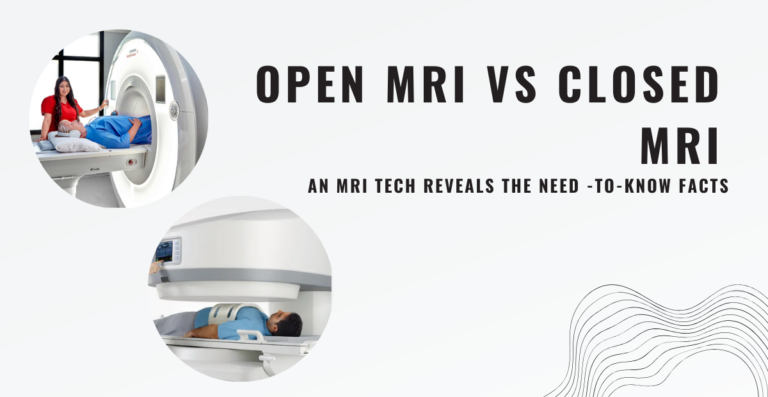Is Titanium Magnetic? An Expert Safety Guide For MRI Patients

If you are wondering what implants are safe for your upcoming MRI appointment, you’re not alone.
MRI is becoming more and more popular, especially whole-body cancer screening.
As an MRI Technologist with years of experience researching the safety of medical implants for MRI, I have seen it all.
Part of my education as an MRI Technologist involved learning about the physics of electromagnetism. Including how metal implants interact with the magnetic fields of the MRI.
A lot of medical implants are made of titanium or titanium alloy.
The MRI is a powerful magnet.
Is titanium magnetic? The short answer is no.
What about other metallic implants?
In this post I world of MRI safety and metal. I go over common misconceptions and all you need to know about your metal implant and undergoing an MRI scan.
Whether you’re a patient, healthcare provider, or simply curious, this post will equip you with the knowledge you need to confidently navigate the intersection of metal and MRI technology.
Is Titanium Magnetic? Why or Why Not?
Titanium (Ti) is found on the periodic table.
Titanium is not magnetic. Which means that it will not attract to the powerful MRI magnet.
We can all breathe a sigh of relief knowing that your titanium implant will not be sucked into the MRI scanner.
So why isn’t Titanium magnetic?
Magnetism and Metal
Electrons are responsible for the magnetic properties of a material. If a metal has unpaired electrons, this means that it is magnetic.
Each electron can be thought of as a tiny little magnet that spins around, generating its own magnetic field.
It can thus interact with outside magnetic fields, such as the MRI.
This is due to the Lenz effect which means that the spinning electrons generate a current, which in turn induces a magnetic field.
Titanium and Its Non-Magnetic Properties
Titanium has no unpaired electrons and is made up of a crystalline structure.
This means that each electron has a partner and its tiny little magnetic field is cancelled out by the other electron because they are spinning in the opposite direction.
Titanium is a paramagnetic material. Thus, it gets very weakly magnetized in the MRI machine.
The magnetic induction is so weak and temporary, that the MRI doesn’t affect the implant, especially if it is strongly rooted in bone. Which most titanium implants are.
This small effect also goes away when the magnetic field is removed.
How convenient!
Titanium In the MRI- Other Considerations
It is worth noting that although titanium is safe to scan, it will cause a metal artifact on the images.
This is called the magnetic susceptibility effect and can occur with any metal.
Another consideration, is that although titanium has a weak interaction with the magnetic field of the MRI, it is advised that you wait six weeks post operation.
Scar tissue typically sets six weeks after the implant is placed.
Why Is Titanium Used For Medical Implants?
Titanium is great for medical use, as it fuses easily with bone and is resistant to corrosion. This makes it a great material for orthopedic implants.
Surgical titanium can include screws, rods, dental implants, and joint replacements.
Titanium is also considered to be non-toxic, with a very low chance of titanium toxicity.
Thankfully, the medical community is becoming more aware of the importance of MRI. Because of this, more and more MRI-safe and compatible metals are being used.
Are There Any MRI Unsafe Metal Implants?
Unsafe metals are those that are considered a ferromagnetic material. “Ferro” refers to Iron (Fe on the periodic table). Iron is incredibly ferromagnetic and strongly attracts.
This is because it contains an unpaired electron that aligns with the MRI magnet. This causes a strong attraction.
If your implant contains metal, it will likely be listed as unsafe for MRI.
This is especially dangerous if there is a possibility of a ferromagntic material in or near the eyes.
If you work with metal and there is any possibility it has gotten in your eyes, your technologist will likely recommend that you get an XRAY to detect the presence of metal.
Other metals are diamagnetic, which means that they pose little to no safety risk.
Other Safety Considerations With Metal
However, there also exists a risk of the metal heating up during your scan.
MRI machines have a static magnetic field that everyone is familiar with (typically 1.5 tesla- 3 tesla).
A lesser known fact is that MRIs also have a time-varying magnetic field. This means that during your scan, your body will be exposed to magnetic fields that switch direction rapidly.
As per Lenz’s law, a current can be induced in any wires or metal in the environment.
If a current is running through your implant, it can cause heating and vibration.
This is a particular concern for MRI technologists. If electromagnetic induction is a concern with your implant, the technologist will have to do some investigation to see if you can safely be scanned.
How Does an MRI Tech Determine If Your Implant Is Safe?
One of the main jobs of an MRI technologist is to screen the patient for any implants before their MRI. If you have had an MRI, then you have had to fill out a screening form.
This form is designed to reveal any implants, no matter how big, small, or when they were implanted, to the tech.
A lot of implants are widely known to be harmless in the MRI, such as dental implants and fillings.
Others, such as aneurysm clips and pacemakers require more investigation.
The MRI Safety List is a widely used authoritative resource for technologists.
Once the make and model of your implant are found, we can search this database to see if it has been tested for MRI safety.
If it is not found in this database, then it is the job of the tech to contact the manufacturer for any safety information before putting you in the MRI field.
Some implants can safely be scanned, but only under certain conditions. These are called “conditional” implants.
The technologist may have to set certain parameters on the machine and monitor you closely to ensure a safe and successful scan.
Different Types Of Metal Implants vs MRI Safety
In the MRI world, there is terminology we use to classify different implants. Unsafe, Safe, and Conditional.
Unsafe
These implants cannot go into the MRI room or the scanner.
Examples are:
- some cochlear (inner ear implants)
- some pacemakers
- pacing wires
- some neurostimulator
- some aneurysm clips
- weighted feeding tubes
- breast tissue expanders
- any implants with magnets on or in them
- hearing aids
Conditional
These implants can be scanned, but only under certain conditions. These conditions include the strength of the magnetic field, the length of the scan, and the type of equipment used.
These can include:
- most heart stents
- some aneurysm clips
- some pacemakers
- some neurostimulator
- some IUDs
Safe
These implants can be scanned with no special conditions required.
These can include:
- orthopedic implants (screws, joint replacements, rods)
- dental implants and fillings
- some heart stents
- some IUDs
- tubal ligation clips
Wrap Up
If you’ve read this far, I hope that this post has eased your concern regarding your titanium implant.
You now know that you can undergo your scan safely.
It is always recommended to bring up any magnetic implant, including titanium to your MRI technologist. This is because it can cause warping on the images.
It is always best to bring your concerns up with your trusted healthcare provider.
Thanks for reading!






